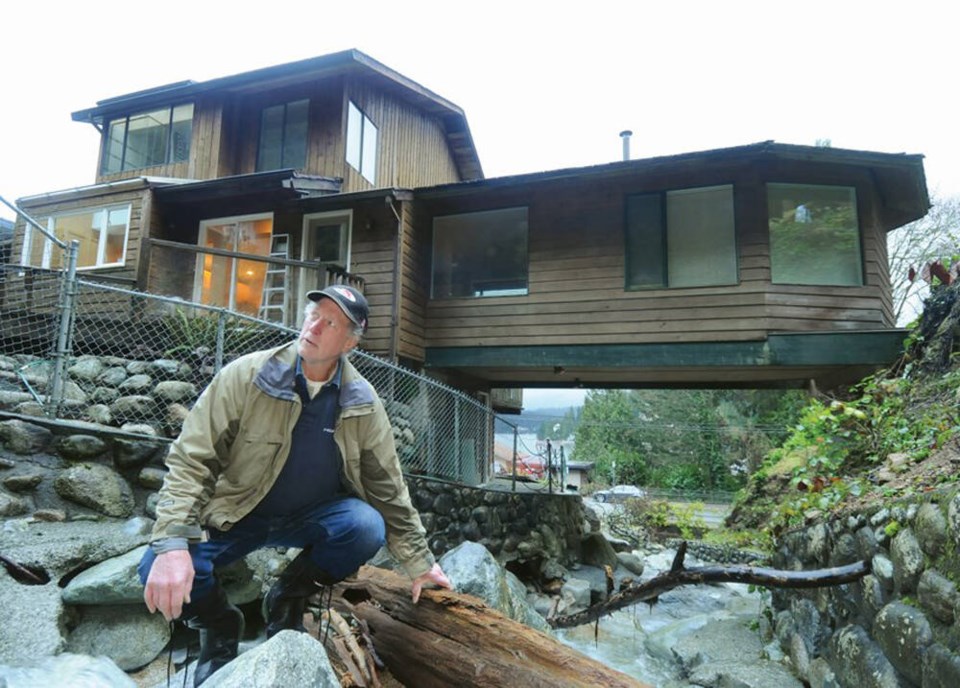A B.C. Supreme Court judge has quashed an order from the District of North Vancouver demanding that a Deep Cove man fix the retaining walls he built to prevent Panorama Creek from eroding and flooding his property.
In 2015, District of North Vancouver council passed a resolution that declared Gary Wilson’s Panorama Drive property “unsafe” because retaining walls were partially collapsing, putting them at risk of flooding not only Wilson’s property but the ones below.
Wilson’s home physically straddles the creek, which frequently jumps its banks during heavy rain events.
The district required Wilson to submit a remediation plan to address the creek on his property. That plan had to be signed off by geotechnical engineers and Wilson had to agree to carry out the work. When Wilson didn’t comply, the district filed a petition in B.C. Supreme Court that asked for a judge’s order to force him to.
Wilson filed his own petition for judicial review, arguing council’s decision was unreasonable.
Wilson argued that any repairs he made to the retaining wall would be undone by boulders and logs washing down the creek from district-owned property above. Wilson said the district should first build a debris guard of some kind upstream from his property.
The case was the subject of protracted procedural delays in court. In a decision handed down Sept. 29 and published on Nov. 18, Justice Michael Tammen sided with Wilson.
At the time of the council’s 2015 decision, the district had a policy to “assist homeowners, who, through no fault of their own, are faced with financial hardship as a result of drainage problems,” but the district staff report before council made no mention of that policy, Tammen noted.
Wilson flagged that policy for district staff, who told him it didn’t apply to him because the “drainage problems causing the unsafe condition on the property were not caused by natural water flow but rather by alteration of the Panorama Creek channel due to the walls in the channel,” an affidavit from district staff stated.
The judge took issue with that.
“At a minimum, before passing a resolution requiring Mr. Wilson to undertake, at his sole expense, the proposed remediation action, council was obliged to consider the district’s own corporate policy manual. The failure to do so renders the decision unreasonable,” Tammen wrote.
Tammen also addressed Wilson’s argument a remediation plan that only addressed the creek where it flows through his own property would be fruitless.
Wilson submitted affidavits from two engineers who concluded the district’s demand would be “nearly impossible to meet.” That was corroborated by earlier engineering reports already commissioned by the district, Tammen said.
“It would have been known to district staff that there were broader issues at play,” he wrote. “Consulting engineers in 1999 and 2003 had placed Panorama Creek in the high-risk category for debris flood events and made a tentative recommendation for construction of a small debris barrier north of Mr. Wilson’s property on land owned by the district.”
Because of that, the outcome of council’s 2015 resolution was “fatally flawed and clearly unreasonable.” Tammen wrote, concluding, “The matter is remitted to council for reconsideration.”
Tammen then ordered the district to cover a portion of Wilson’s legal costs.
The District of North Vancouver released a statement in response, Friday, saying simply, “We are disappointed with the ruling and are considering our options.”



